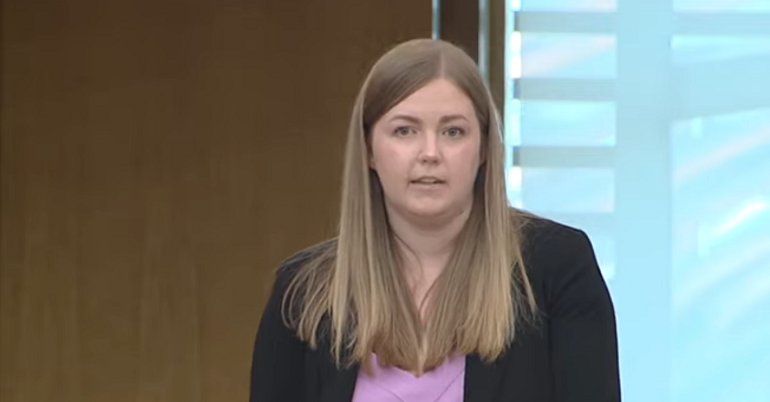How The Scottish Parliament Can Make Fair Votes a Reality
There’s one pressing issue that faces the UK now. That is the response to recession from the Westminster government. As other contributors here have pointed out, the current approach is likely to send the economy back into recession with disastrous effect.
There is, however, an opportunity to change the way the UK selects its governments. I was delighted to be able to address the Take Back Parliament demonstration in Edinburgh two weeks ago. The thousands of people who have turned out at demonstrations across the country to protest in favour of fair votes deserve to be heard.
There is a crucial opportunity to make fair votes likely. This is provided by a majority in the Scottish Parliament for the Single Transferable Vote, a Liberal Democrat as Secretary of State for Scotland and plans to pass a new Scotland Act coming at the same time.
The Scottish Parliament could change the debate on electoral reform by passing a vote requesting that the Scottish Parliament be elected in 2015 by the Single Transferable Vote. It would mean the purest form of proportional representation gets back on the table as an option.
It could change the debate about electoral reform for the UK Parliament and lead to more radical change in the system for electing MPs. The proposed Alternative Vote will do little to make parliament more representative, and will leave large numbers of votes wasted.
The current Scottish Parliament system is proportional. But it’s not proportional in a satisfactory way. By having MSPs elected in two ways the electorate are regularly confused. Some list MSPs have a low workload, while constituency MSPs are often overburdened with local concerns. Critically list MSPs are too often criticised for being second class.
A much better system is the Single Transferable Vote, as advocated by the Electoral Reform Society. It’s better than the current Scottish system (which is called the Additional Member System – AMS or Multi-Member Proportional – MMP) for a number of reasons.
It allows voters a choice over who all their representatives would be, while the electorate have no choice over who is where on lists in AMS. In 2003 the SNP’s decision to move Margo MacDonald down the Lothians list cost them a seat as she got substantially more than half their vote on the list as an independent. Clearly Margo was more popular than the 4 other candidates placed above her on the list, 2 of whom failed to be elected. But had she not left the SNP the electorate would have been denied the opportunity to elect her unless they elected 5 SNP parliamentarians in the region.
STV also encourages MSPs to work much harder for their constituents. There is no such thing as a safe seat under STV. All members have to compete with one another to ensure they get re-elected. This is quite different to the constituency members elected to the Scottish Parliament, some of whom are highly unlikely to ever lose their seats. It would also even out the burden of constituency work between the 6 MSPs for each constituency.
Scotland already elects its Councillors using STV, so the system is familiar. And reducing the number of electoral systems in place in Scotland is surely a good thing. Currently the use of First Past the Post for Westminster, AMS for Holyrood, STV for Councils and a proportional list for Europe is confusing for everyone.
All this needs is one of the three parties that support STV to put a motion for debate on the Parliament agenda. With the Parliament supporting change it would be very difficult for an STV supporting Secretary of State to refuse this opportunity. By introducing a radically fair system in Scotland, the likelihood of a fair system for the UK increases.




Thanks for your comments Gordon.
I quite agree that STV for Local Government was a fix. But the argument is here to be won. And I don’t think we’d see that sort of fix again. The fix came about because Jack McConnell had to sell STV to Labour councils who would inevitably lose power with the change. He had to ensure that Labour didn’t lose control of too many councils.
The difference between Local Authorities and the Scottish Parliament is that with 5 or 6 member seats the SNP and Labour would be in with a chance of picking up one seat everywhere in Scotland. This would balance their losses elsewhere, and render an already permanantly balanced parliament no more or less balanced.
They’d trade that for the certainty of getting 2 out of 3 or 3 out of 4 like they did with Local Authorities.
But I agree entirely with your substantive point. The changes must be linked to an assurance of proportionality. Which means at least 6 and preferably 8 MSPs to a constituency.
James, sorry I’d missed Robin’s motion in March. Of course it’s worth mentioning, and thanks for doing so.
Whilst I support any move to make Westminster more representative, it should not be done by making the Scottish Parliament less so.
I backed STV for local Government, however, was appalled when few objections were raised by Fairshare to a maximum or 4 members per seat, which makes it the least proportional STV system in the world. As a result the effective threshold for first preference votes was 11%, which with a small number of exceptions excluded small parties.
If we had a change to STV for the Scottish Parliament, it is unlikely even 4 seats per ward would be tolerated. This would push the threshold for election up from 4.5% first preferences to around 15%. All smaller parties would be excluded, whereas under the present system Greens, Socialists and Independents have been elected.
I wish a representative democracy where alternative voices can be heard. STV with 3 per seats is less representative than Additional Member with 7 extra per seat. It is arguable that the minimum for STV to deliver at least as representative a result as the Additional member system is to have at least 8 member wards. There is no way this would be agreed by Labour or SNP. Arguing for the system without tying it to numbers, will deliver a less democratic outcome.
As regards Westminster – even the AV vote would allow no wasted vote. It would not be less democratic than the present system. AV+ may be winnable, which even with 10% extra seats (even broken down regionally into say 5 per region) could deliver an effective threshold of 8%. Arguing for pure PR with 2 or 3 member seats – the most achievable will deliver a less democratic result than AV+, say a 15% or 20% threshold. The voting system and numbers must be tied together to ensure real democracy.
Gordon Morgan, Solidarity
Was it really not worth mentioning, even here, that Robin brought and won a vote on STV at Holyrood in March?
Well done, Peter. I’ll publicise your post to Fairshare. I think it’s time we pushed for this for the Scottish Parliament.
Splendid post, Peter.
I concur.
Indeed – I kind of thought someone may have pushed this already, given a majority of MSPs are now from parties which support STV over AMS… I guess not worth it if it’s a one off bill (a little geeky, perhaps) but if they are ramming through a new Scotland Act anyway, then may as well.